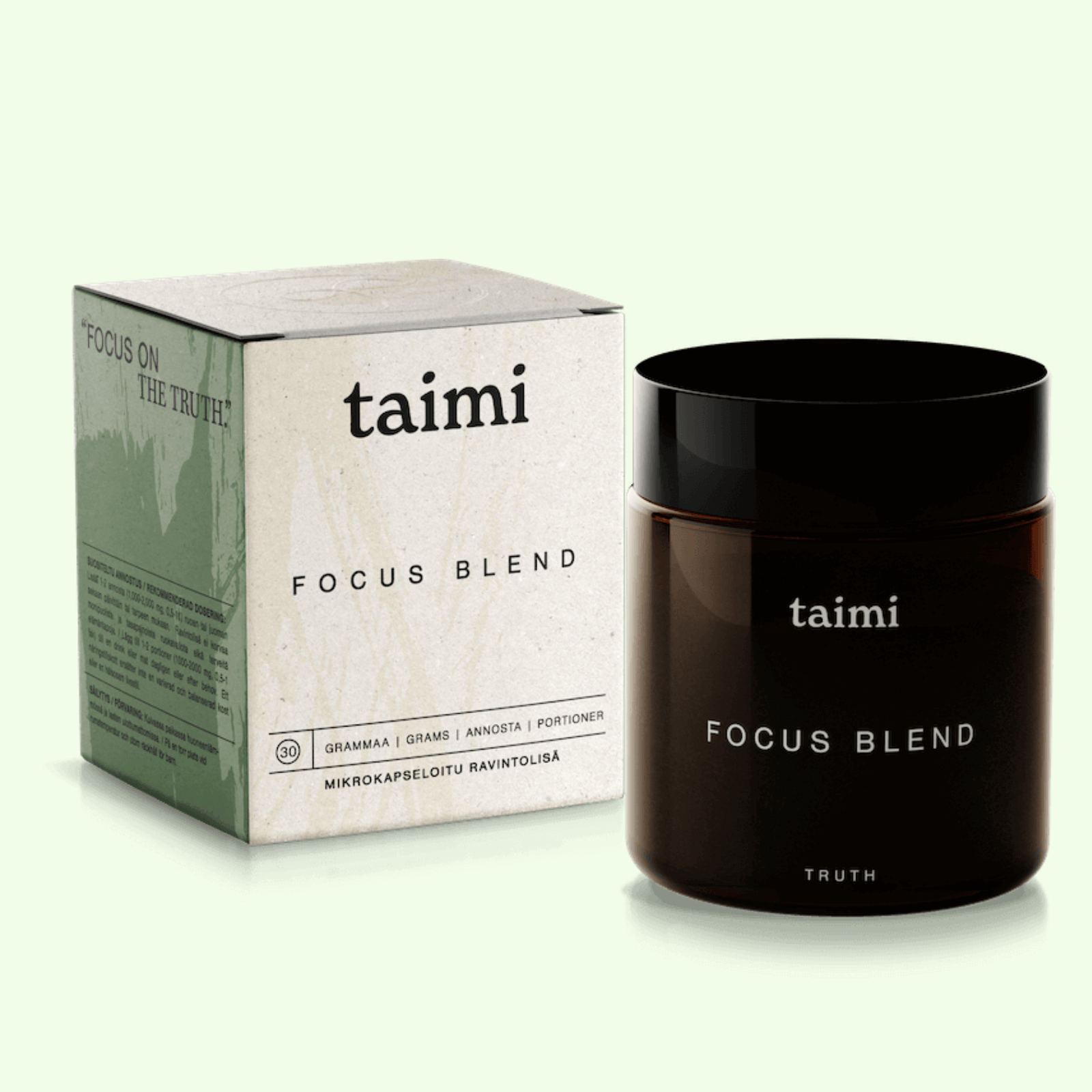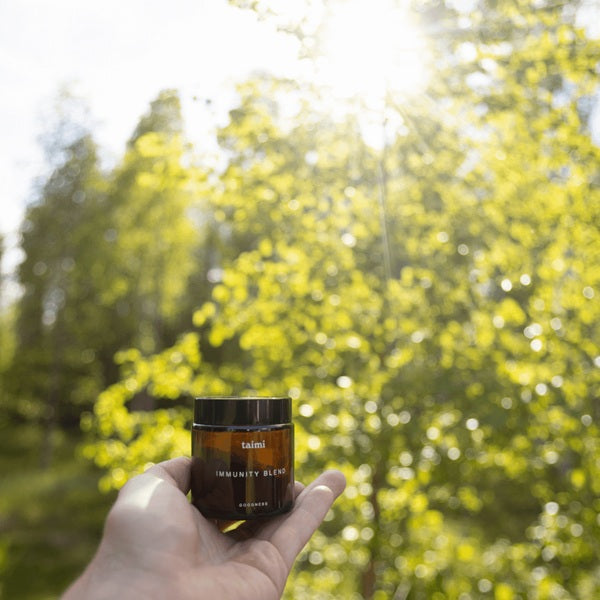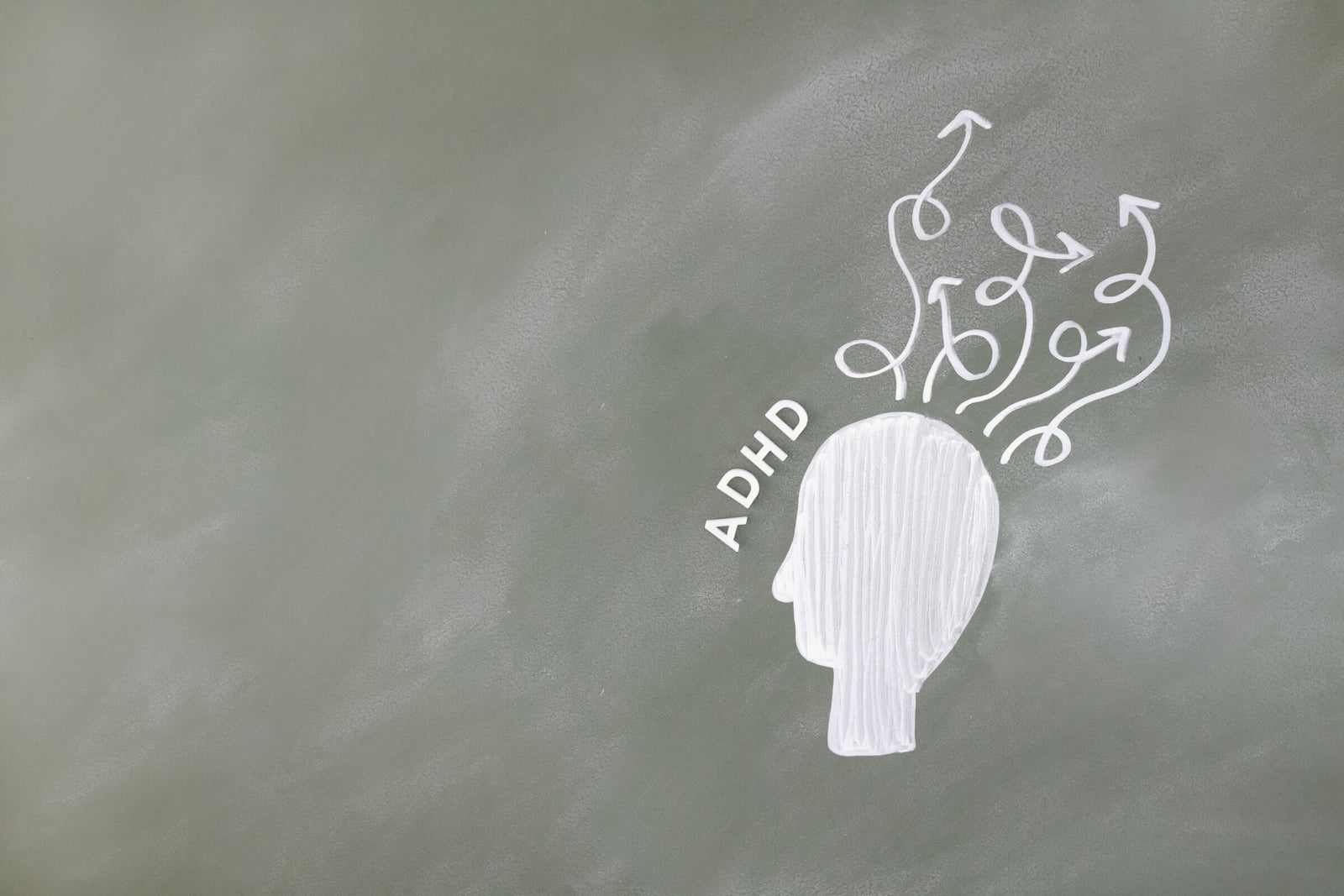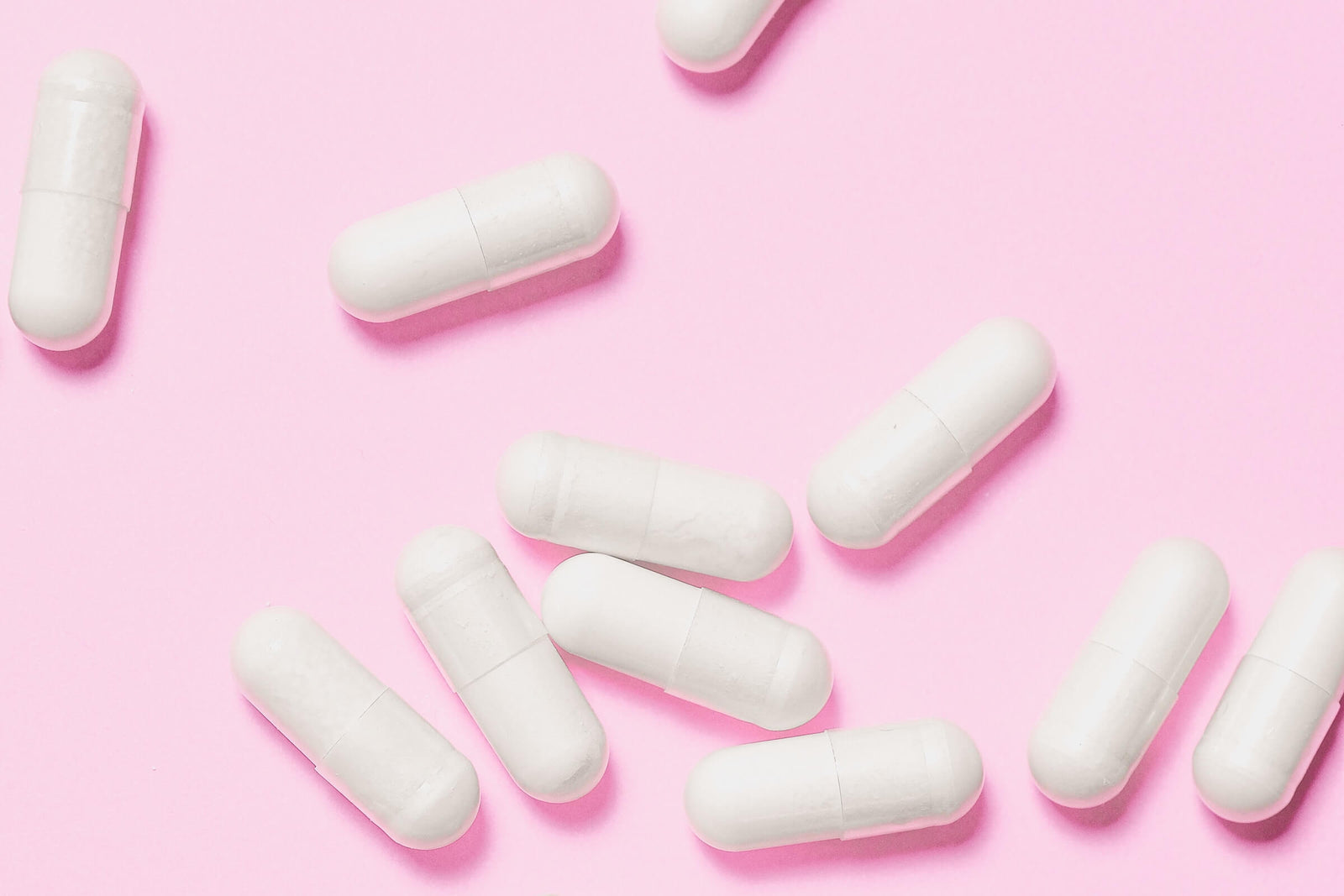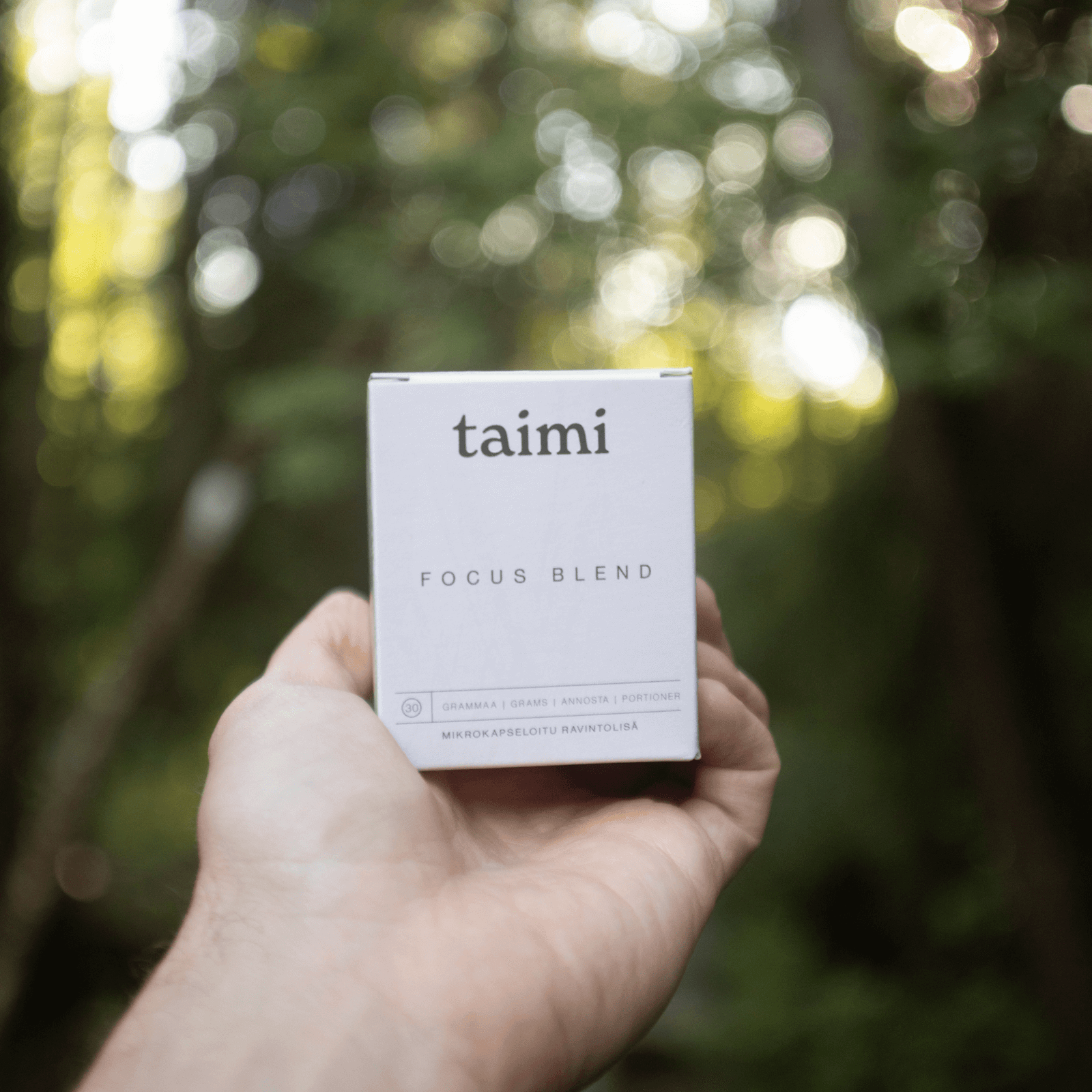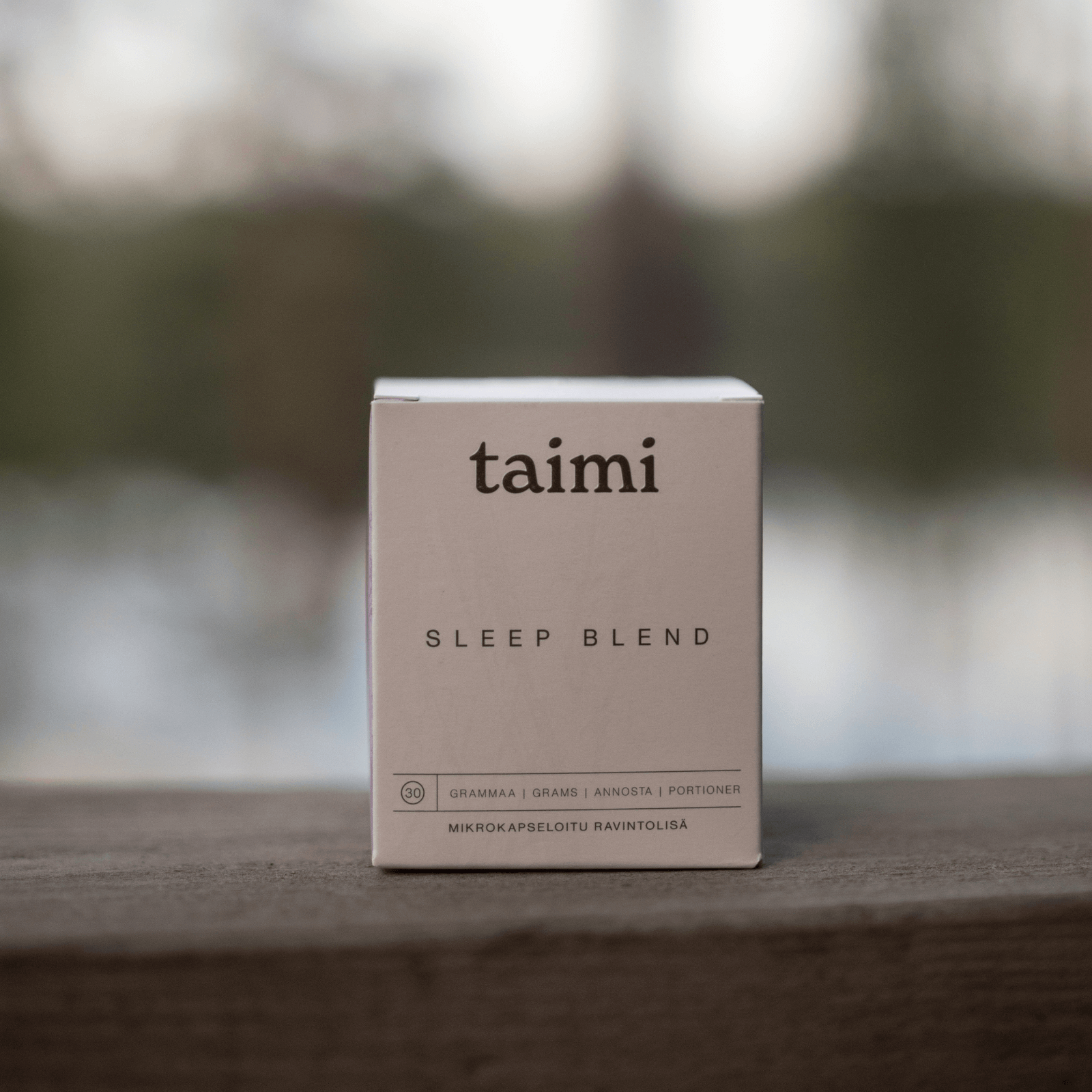Up to a billion people are believed to suffer from vitamin D deficiency? So it's no wonder that this vitamin D is one of the supplements most recommended by doctors to treat and prevent its deficiency symptoms.
Dark-skinned people, people living in northern regions (Finns!), who have less year-round sunlight, and overweight people have a higher risk of vitamin D deficiency than others.
Is the deficiency easy to fix? Vitamin D deficiency is relatively easy to correct and at the same time reduces your risk of developing related diseases.
In the summer, staying in the sun without sunscreen is the surest way to guarantee an adequate intake of vitamin D. Eating vitamin D-rich foods also helps improve vitamin D levels in your blood. Thirdly, taking high-quality vitamin D supplements helps.
Read more below about how much time should be spent in the sun and which foods help to avoid vitamin D deficiency.
What is vitamin D?
Vitamin D is a fat-soluble vitamin that is stored in the liver and fatty tissues. It is slightly different from other vitamins, because first of all it is not a vitamin, but a hormone. Secondly, the body produces most of it itself with the help of sunlight, that is, we do not get vitamin D only from food, but the body produces it itself.
Why is vitamin D important?
Below are the known health benefits of vitamin D:
- Vitamin D promotes bone health by helping the absorption of calcium and other bone health -promoting vitamins and minerals, such as magnesium, vitamin K and phosphorus.
- Vitamin D supports the immune system and helps prevent prolonged or excessive inflammatory reactions.
- Adequate levels of vitamin D in the blood seem to help protect against some infections and viruses by regulating the role of white blood cells, reducing the ability of viruses to reproduce and activating enzymes that prevent tissue damage.
- Vitamin D can help support the reproduction of healthy cells and may be involved in protecting against the development of autoimmune conditions.
- Promotes cardiovascular health and helps regulate blood pressure, cholesterol levels and inflammation.
- Vitamin D helps control blood sugar levels and works together with calcium to regulate insulin secretion.
- Vitamin D may help prevent depression and mood disorders, as well as keep mood positive, energy levels high, and treat seasonal affective disorder (aka "major depression").
- My vitamin D seems to help prevent obesity. Studies show that the deficiency is connected to higher amounts of fat , although this connection is still being studied.
How can I increase blood vitamin D levels quickly? The easiest way is vitamin D supplements, which are available in two different forms: vitamin D2 (ergocalciferol) and vitamin D3 (cholecalciferol).
Vitamin D3 obtained from animal products, and especially from the cholesterol they contain, is the closest to the type produced by humans. Animal-derived vitamin D3 is a more active form and is believed to convert to a form usable by the human body faster than vitamin D2.

Exposure to sunlight throughout the year helps prevent vitamin D deficiency. Since a large part of the year is dark in Finland, it is important for Finns to use vitamin D supplements and thus prevent vitamin D deficiency and related symptoms.
Vitamin D from the sun:
Many people assume that the best way to maintain normal vitamin D levels is to drink vitamin D-fortified milk drinks, eat fish, or use supplements such as cod liver oil. These are all good sources of vitamin D, but direct exposure to the sun is by far the best way to ensure vitamin D intake.
It is believed that up to 90-95 percent of most people's vitamin D comes from occasional exposure to sunlight .
When you sit in the sun without sunscreen for about 10 minutes, your body probably produces about 10,000 IU (international units) of vitamin D. Of course, the actual amount varies from person to person, depending on skin color, time of year and location.
Melanin is the substance that affects how light or dark your skin color is. The more melanin in your body, the darker your skin tone. Melanin is released when we are exposed to ultraviolet radiation.
The more UV rays we get, the more melanin is produced in our skin. The amount of melanin in your skin affects how much vitamin D you can produce. The lighter your skin is, the easier it is for you to produce it.
Vitamin D deficiency and symptoms
What does vitamin D deficiency cause? According to scientific studies and reviews, the most common symptoms of vitamin D deficiency are:
- chronic fatigue
- osteoporosis
- heart disease and high blood pressure
- cancer
- autoimmune diseases
- depression and mood disorders
- poor skin condition, redness, inflammation and dryness.
- insomnia
- arthritis and joint pain
- diabetes
- difficulty concentrating
- asthma
- hair loss
- multiple sclerosis (MS)
- chronic muscle or bone pain
- psoriasis
- fibromyalgia
- autism
Indeed, many doctors recommend that anyone with these health problems or the following symptoms should have their vitamin D levels tested for deficiency.
Health risks of vitamin D deficiency
Vitamin D deficiency appears to be linked to an increasing number of health problems, such as heart disease, cancer, diabetes and mood problems.
Listed below are some of the potential health risks that may be associated with vitamin D deficiency:
- Weakened bones - Vitamin D deficiency can lead to softening of the bones, osteomalacia, or a bone abnormality, rickets. In addition, a deficiency increases your risk of osteoporosis and fractures. The risk is especially high in elderly people.
- Susceptibility to infections and viruses - Low levels of vitamin D in the blood have been linked to a higher incidence of some serious infections, such as those affecting the lungs and respiratory system.
- Mood Disorders - Because vitamin D acts as a hormone in our body and affects brain function, its deficiency has been linked to an increased risk of mood disorders such as depression, seasonal affective disorder and severe mood disorders during PMS, insomnia and anxiety.
- Hormonal imbalances - Low levels of vitamin D in the blood can interfere with the proper production of testosterone and estrogen, leading to hormonal imbalances. That, in turn, can lead to many unwanted symptoms.
- Possible weight gain - Low vitamin D levels may be associated with weight gain in older adults, but weight gain is usually relatively minor. This association requires further research, but it has been speculated that vitamin D may affect where and how fat cells shrink or grow.
- Cognitive problems - People with vitamin D deficiency may perform worse on standardized tests, have impaired decision-making abilities, and may have difficulty with tasks that require concentration and attention.
- Mental health problems - Some studies have shown a correlation between low levels of vitamin D and an increased risk of schizophrenia and multiple sclerosis.
- Susceptibility to certain types of cancer - Vitamin D deficiency has been linked to an increased risk of breast, colon and prostate cancer in particular. According to research published in Frontiers in Endocrinology, vitamin D plays a role in factors affecting tumor growth, cell differentiation and apoptosis. Studies show that it can reduce the risk of breast, colon and ovarian cancers, possibly due to vitamin D's role in the cell cycle or its ability to block excess estrogen.
Causes of vitamin D deficiency
Why do some people develop vitamin D deficiency? It is believed that one of the biggest causes of vitamin D deficiency is that we spend most of our time indoors. Getting natural vitamin D indoors is significantly more difficult than outdoors in nature.
The most common causes of vitamin D deficiency are explained below:
1. Lack of sunlight
Most kids these days spend most of the day inside for hours - watching TV, playing video games, and browsing the phone. Likewise, most adults work indoors, exercise in gyms, and spend their free time in their homes, where they are protected from the sun.
With all this time spent indoors, it's no wonder we don't get enough of the "light vitamin" and that vitamin D deficiency affects over a billion people worldwide .
Excessive use of sunscreens
Since the risk of skin cancer has increased in recent years, doctors strongly advise children and adults to use sunscreen even when exposure to the sun is relatively low.
If you choose a sunscreen with an SPF higher than 30 (which doctors usually recommend), your body's ability to produce vitamin D may decrease significantly. This can lead to vitamin D deficiencies , because even if we spend time outside, sunscreen does not give our skin the opportunity to produce vitamin D from sunlight.

Strong sunscreens may block vitamin D. formation on the skin and thus debilitating you from getting adequate amounts of vitamin D.
Other causes and risk factors for vitamin D deficiency include:
- Research shows that certain health problems, such as abdominal obesity, type 2 diabetes, insulin resistance, and hypertension, increase the risk of vitamin D deficiency.
- Darker Skin Pigmentation - Statistics from the National Health and Nutrition Examination Survey show that more than 90 percent of people with darker skin pigmentation in the United States (African Americans, Hispanics, and Asians) are vitamin D deficient, while "only" 75 percent of the Caucasian population is deficient .
- Certain occupations - A study conducted in 2017 showed that occupation can also have a great impact on vitamin D levels in the blood. The researchers found that shift workers, healthcare workers, and those who work indoors are at higher risk of developing the deficiency because of the limited time they spend outdoors.
- Overweight - As the number of overweight and obese adults and children has steadily increased in recent decades, the prevalence of vitamin D deficiency symptoms has also increased. Studies show that vitamin D deficiency is also correlated with an increased risk of common cancers, autoimmune diseases, hypertension, and various infectious diseases.
Treatment and Prevention
Although certain foods provide vitamin D, exposure to sunlight is still the best way to get the amount of vitamin D you need to prevent deficiency.
However, research shows that eating foods rich in vitamin D and calcium can help increase vitamin D levels, so try to add these quality, natural sources to your diet regularly.
Importance of exposure to sunlight:
Most experts recommend about 10-15 minutes of direct sunlight daily without sunscreen for fair-skinned people. The darker your skin, the more. you probably need time outside to get enough vitamin D because you naturally have more protection against the effects of UV rays.
Some experts recommend that people with darker skin spend about 40 minutes to one hour a day in the sun if possible. The further you live from the equator, /for example in Finland), the more time you need (closer to an hour a day).
In winter, you need to double the recommended time to ensure adequate vitamin D production. In Finland, especially in October-January, this is very difficult, because sunlight is only enough for a very short time and even that is weak in terms of UV radiation. During the winter, you should ensure your vitamin D intake with the help of supplements.
Here's a good rule of thumb to know your body is producing vitamin D:
- The shadow cast by sunlight is shorter than you. This indicates that the UV index is high enough.
- The UV index is usually at its highest between 10 am and 3 pm.
Boost your vitamin D levels naturally with the following routines and products:
- Sunlight exposure: Aim for 10-60 minutes of sun exposure every day in the summer. The range is wide because it depends on the season, where you are in the world, and how much of your skin is exposed. If you have lighter skin, you will need less time. If you have darker skin or live further north, you need about an hour of sunlight in the summer to get enough vitamin D.
- High-quality cod liver oil. About one tablespoon a day is enough.
- High-quality wild fish. Good species are wild salmon, haddock, turbot, mackerel, eel, whitefish, sardines, tuna
- Eggs
- Beef liver
- Raw or organic whole milk
- Caviar and roe
- Mushrooms exposed to UV light

In Finland, it is difficult to get enough vitamin D in the winter. In winter, you should eat plenty of vitamin D-fortified foods and take a vitamin D supplement of at least 20 µg/day, so that you can get enough vitamin D to guarantee the body's vitality during the winter months.
Vitamin D in mushrooms:
In some mushrooms, the vitamin D content is increased by exposing the mushrooms to ultraviolet light.
Mushrooms contain plant sterols that can convert UV light into vitamin D, and as little as five minutes of exposure is believed to produce a significant amount of vitamin D.
Although mushrooms are usually grown indoors, many growers have started adding UV lamps to their production facilities.
Maitake mushrooms can contain large amounts of vitamin D. Portobello mushrooms and other mushroom varieties can also be good sources, but their amount does not correspond to the vitamin D levels produced by maitake.
You can ask the employees of your local store or call the farmers directly if their mushrooms are grown indoors or outdoors, so you know if the mushrooms you buy contain higher amounts of vitamin D. Many packages today also state whether the mushrooms have been exposed to UV light and whether they contain vitamin D.
Vitamin D in dairy products
Although many people think so, regular pasteurized milk drinks and other dairy products do not naturally contain much vitamin D. The vitamin D contained in milk drinks is synthetic vitamin D, which is added to pasteurized cow's milk and plant-based milk-like drinks (oat milk, soy milk, etc.).
Vitamin D is added to all milk drinks sold in Finland, but foods made from milk, such as cheese and ice cream, are not usually added. Synthetic vitamin D added to foods is thought to be less effective than naturally occurring vitamin D, and may also potentially block the effects of natural vitamin D.
Raw milk, on the other hand, is believed to naturally contain a small amount of vitamin D, which is stored in the milk's fat and is not destroyed during pasteurization. According to some sources, raw milk can contain up to 38 IU (0.95 mcg) of vitamin D per liter.
However, knowing the true level of vitamin D in raw milk is difficult, as it varies widely depending on the milk tested and correlates with the health and diet of the animal from which the milk comes.
Vitamin D supplement and dosage:
Treatment for vitamin D deficiency usually involves taking a vitamin D supplement.
How much vitamin D supplement should be taken?
In Finland, the recommended intake of vitamin D for adults is 10 µg/day. In our opinion, this is far too small an amount, and especially during the winter time, it is recommended to test your vitamin D levels if you decide to take a vitamin D supplement of only 10 µg/day.
The SD-25 test measures the amount of vitamin D stores in the body. If the blood vitamin D level is below 50 nmol/l, then we recommend taking vitamin D 100 micrograms for two weeks and doing another SD-25 test.
In Finland, the reference values for vitamin D are:
- Deficiency state: less than 25 nmol/l
- Inadequate intake: 25–50 nmol/l
- Adequate intake: 50–75 nmol/l
- Target level for osteoporosis patients: 75–120 nmol/l
- Excess intake: more than 250 nmol/l
One dose of Taimin Immunity Blend contains 20 µg of vitamin D. This is often a sufficient daily dose to maintain adequate vitamin D intake. However, you can also take double the amount of Immunity Blend or, for shorter periods, triple the amount if you feel you are going to get sick.
How much you need
According to the National Institute of Health and Welfare (THL), the recommended amount of vitamin D is 10 µg/day per day for adults. However, some have recommended that around 100 micrograms per day temporarily, for example for two weeks, may still be more effective. A large momentary intake of vitamin D poses no risks if you have a clear deficiency in your vitamin D levels.

Sufficient vitamin D intake should be ensured by eating good sources of vitamin D and by testing the SD-25 level in the blood. If your vitamin D levels are below 50 nmol/l, then you should clearly increase your vitamin D intake, for example by taking 100 micrograms of vitamin D3 as a course for two weeks.
However, this is only a general recommendation, and there is no other way to know the exact amount than by doing a test that tests the SD-25 level in the blood. You may need more or less, and you should discuss this with your doctor.
Can you get too much vitamin D?
Yes. It is possible that you are getting too much vitamin D from food. You rarely get too much of it from the sun, because the body regulates the intake of vitamin D with the help of the color pigment, melanin. The darker your skin is, the less vitamin D it produces.
Your body is also able to store vitamin D precursors for future use and destroy amounts that exceed the safe amount. Because of this, vitamin D deficiency is usually a bigger concern than excess vitamin D intake.
Vitamin D poisoning is thought to be very rare. Too much vitamin D can cause calcium to build up in the blood, which is called hypercalcemia. Despite this, a 2019 study found that higher doses of vitamin D supplementation did not improve bone health, but actually decreased bone mineral density in healthy adults.
In this three-year study covering more than 300 participants, vitamin D supplements were given at 10 µg/day, 100 µg/day and 250 µg/day. The results showed that compared to the 10 µg/day group, the higher doses containing vitamin D3 resulted in statistically significantly lower radial bone mineral density, but did not change bone strength.
Further studies are needed to determine whether higher daily doses of vitamin D supplementation have a negative effect on bone health.
Also remember that since vitamin D is a fat-soluble vitamin, it should be taken with fats for optimal absorption. Taimin's Immunity Blend is microencapsulated, which itself improves the absorption of nutrients. You can add Immunity Blend to food, which provides the necessary fat to promote vitamin D absorption.
If you're going to eat a vitamin D-rich food, it's best to pair it with another essential fat source, such as ghee butter, coconut oil, nuts, seeds, or fish.
Vitamin A and vitamin D also have an important relationship. Some studies have shown that vitamin D deficiency can worsen when a person receives a lot of vitamin A as a supplement.
These studies show that when blood vitamin D levels fall below 50 nmol/l (i.e. close to deficiency), higher vitamin A intake can make the problem worse. The good news is that when vitamin A and D levels are both adequate, studies have shown that they work together to help your body metabolize the vitamins and use them optimally.
Summary
- Many Finns may suffer from vitamin D deficiency symptoms, especially in winter.
- Vitamin D deficiency can lead to significant health problems such as cardiovascular disease, diabetes, autoimmune diseases and cancer.
- The most common symptoms of vitamin D deficiency in adults are weakness, chronic fatigue, depression, anxiety, difficulty sleeping, weak bones and a weak immune system.
- The two main causes of vitamin D deficiency are lack of exposure to the sun and the use of very strong sunscreen.
- Exposure to sunlight without sunscreen for about 10 minutes at noon (in summer) can help the body produce up to 250µg of natural vitamin D.
- Good dietary sources of vitamin D include fish, mushrooms exposed to UV radiation, and eggs.
- The treatment of vitamin D deficiency usually includes a vitamin D supplement, preferably in the form of vitamin D3. Most adults should take 10-125 µg/day, depending on blood vitamin D levels.
- The vitamin D level is measured with a blood test. The key value is SD-25, which should be more than 50 nmol/l.


